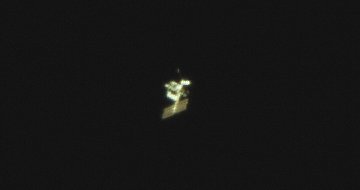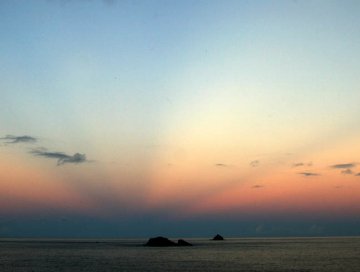 Where's Saturn? Is that a UFO--or the ISS? What's the name of that star? Get the answers from mySKY--a fun new astronomy helper from Meade. Where's Saturn? Is that a UFO--or the ISS? What's the name of that star? Get the answers from mySKY--a fun new astronomy helper from Meade. CELESTIAL TRIANGLE: Tomorrow morning, Dec. 5th, Venus, the crescent Moon and first-magnitude star Spica will gather together in the eastern sky just before sunrise. You don't need to go outside or even wake up 100%--just shuffle in your pajamas to an east-facing window and behold the triangle! The best time to look is around 5 am: sky map. SIGHTINGS: If you live in the United States, this is a good week to see the International Space Station. The giant spacecraft is flying over many US towns and cities during the evening hours of Dec. 3rd-6th: flyby alerts. During a typical flyby, the station shines two or three times brighter than Sirius, the brightest star in the sky, making it a wonderful naked-eye object. The station also looks great through a backyard telescope: 
"I never thought I would see so much detail," says Scott Adler who took the picture on Nov. 20th using his 10-inch 'scope in Wallsend, Australia. Prominent in the photo are the station's newly-extended P6 solar arrays and a glistening new set thermal radiators: labels. These new additions to the ISS make the station bigger and brighter than ever. EXTRA: "Careful planning, plotting and waiting paid off for this photo of the International Space Station passing within a few degrees of Comet 17P/Holmes earlier this evening," says Becky Ramotowski of Tijeras, New Mexico. "The sky was cloud covered just moments before showtime!" ISLAND MYSTERY: The sun was setting last Saturday on the Dutch Caribbean island of St. Maarten when a fan of shadowy rays sprang up from the horizon. They looked like ordinary sunset rays except for one thing--"the sun was on the opposite side of the sky!" says onlooker Stephen Thompson. Dumbfounded, he took this picture: 
Photo details: Canon XTi, F6.7, 24mm, 1/90s exposure.
"I am more than eager to know what this is," he says. The answer: Anti-crepuscular rays. Behind Thomson's back, the setting sun dipped behind some ragged clouds. The edges of those clouds cast shadows--immense tubes of darkness--that arced all the way across the sky to converge on the opposite horizon. Such shadows are called anti-crepuscular rays. Anti-crepuscular rays are not rare, but they are delicate and often go unnoticed. The next time you see shadows emerging from the sunset, turn around. There may be something beautiful waiting right behind your back.
Comet 17P/Holmes Photo Gallery
[Interactive World Map of Comet Photos]
[sky map] [ephemeris] [3D orbit] [Night Sky Cameras] | 
